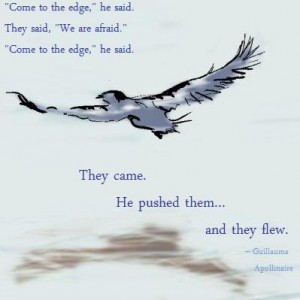When I work with my editing clients, I often implore them to adhere to this commandment of effective writing: Keep it strong and direct. In other words: Let the horse lead the cart.
Standard sentence structure is standard for good reason. It works. It relates back to how we all learn to read in the first place. More than that, however, it plays to our innate psychological response to the written word.
Somebody does something, perhaps to someone/something else, possibly in a certain way or in a particular setting. Thus, the standard sentence structure: Subject, Action, Object.
We often dress that up a bit, adding a descriptive or two, character motivation, setting—the how, why, when and where of it. Nonetheless, we typically sandwich the action between the subject committing the act and the object on whom the act is committed—in that order.
We can mix it up on occasion, to break up the rhythm and pace of the prose (preventing the “Lullaby Effect”), or to provide emphasis—a punch—to a particular segment. Yet those exceptions work in large part because they stand out from the rule that guides most of our writing. If those exceptions become the rule of your prose, they lose their effectiveness, their panache. The writing then strikes the reader as a sloppy, choppy, stop-and-start, out-of-order mess.
I offer this example from one of my clients (names changed to protect the not-so-innocent).
ORIGINAL (Bad): Against snow clouds that hid the afternoon sun, Albert saw a gray cliff’s distant summit. A pine forest sprang dark from the foreground. Promising abundance, the forest embraced the nomadic hunters. ver fallen log’s rough bark, slowly turning white, red deer leapt.
REVISED (Good – 1st Alternative): The gray cliff of a distant summit rose against snow clouds that hid the afternoon sun. A pine forest sprang dark from the foreground. The forest embraced the nomadic hunters and promised abundance. Red deer leapt over the rough, whitened bark of a fallen log.
NOTES
1. I reordered the first sentence, placing the horse firmly before the cart.
2. I eliminated the “Albert saw” reference. This is not only TELLING (as opposed to SHOWING), but it is unnecessary given that we’re in Albert’s POV in this segment.
3. I left the second sentence unchanged.
4. I reordered the third sentence. It’s generally bad form to begin a sentence with an Infinite Verb Phrase (“Promising abundance”). Think of it as an act without an actor.
5. I reordered the final sentence.
6. The following alternative also works. It’s a matter of stylistic preference, and of which pace works better at that specific point in the story.
REVISED (Good – 2nd Alternative – slightly different pacing): The gray cliff of a distant summit rose against snow clouds that hid the afternoon sun. A pine forest sprang dark from the foreground, embracing the nomadic hunters and promising abundance. Red deer leapt over the rough, whitened bark of a fallen log.
In the example below, culled from the same story, the author and I agree to violate the rule in the final, underlined segment.
EXCEPTION: Every animal cast its nose upward. They jittered and hesitated, until survival instinct drove them to bolt for safety within the trees to the east. In the forest to the west, and emitting a foul, warning stench, a most deadly predator approached.
This works because of the manner in which the suspense builds throughout the paragraph, and the way in which the final segment reveals the cause of that tension. The author builds the suspense, causes the reader to anticipate with some anxiety the revelation.
Absent a final revelation that packs a punch (the literary device we call “Tension”), this structure would not work. In that case, stick with standard structure. If you try to force it, to create high tension where none exists simply by restructuring your sentences, you will come off as melodramatic, cheesy and amateurish.
‘Til next time, and as always, remember: To write well, you must work hard. To succeed in this tough gig, you mustn’t be lazy (or discouraged).






Please follow me here: